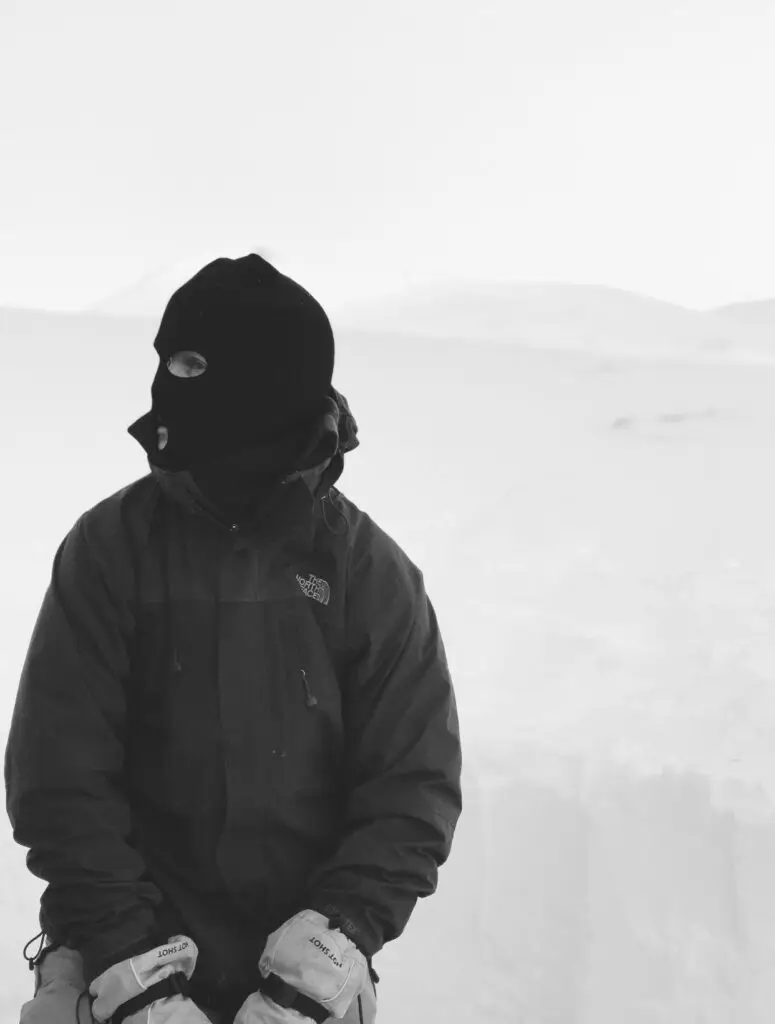A good rule when dressing for the cold is to choose several thin layers of clothing – no matter what outdoor activity you are going to do. It provides air between the garments, and dry air is the best insulation available.
When you run, it is the legs that work the most and creates heat. Therefore, it is most important that the upper body is kept warm.
Wool is gold and so is a good neck gaiter and something to cover your head. It is important to keep your upper body and hands warm. Remember reflex for good visibility.
Cold weather is not so dangerous
When it comes to temperature conditions, there is little to suggest that cold weather in itself increases the risk of injury. A good tip is still to dress well enough, protect the ankle joint with a good pair of ankle gaiters to avoid bare skin between the trouser legs and the running sock.
If you have asthma or a mild cold, you must of course consider the conditions when the temperatures are very low or the air pollution is high. Cold weather causes dry mucous membranes, and can cause respiratory problems. One problem that I’ve always had is figuring out how warmly I should dress. Inevitably, I wind up dressing like the Michelin Man, only to find myself stripping down less than five minutes after I’ve started my run.
Dress properly
Winter and cold can be a major obstacle for many to exercise outdoors. But cold is no obstacle to exercising outside – as long as you dress properly. Winter training provides great nature experiences and clean and fresh air, and for ski enthusiasts there are in many places an eldorado of trails so you have the opportunity to vary the training as you want.
However, for outdoor training to be successful, proper clothing is important. The ability to stay warm is based on the fact that clothes protect from the cold by forming a warm layer of air close to the skin. What to use depends on the activity level, but the general rule is that you should dress according to the multi-layer principle.
This consists of:
Underwear
Has the function of transporting sweat away from the skin. You want the skin to be as dry as possible – this is of course difficult during a hard session where you sweat a lot. But at relatively high activity, various super underwear work well as they absorb sweat to a low degree and transport moisture away from the skin to the next layer of clothing.
These garments are the optimal, but very thinly woven wool, as well as mesh wool underwear, also work well. Wool does not carry moisture as well as the synthetic fabrics, but has the advantage that even if it is a little wet from sweat, it has a good heating effect.
The wool products can also be used under point 2. However, cotton is banned in the cold, as it absorbs and accumulates sweat and you get very cold when you stop. The disadvantage of the technical underwear is that it does not smell so good after some use.
Middle layer
The function of this layer is to function as a heat insulating layer, and one can determine the thickness of this layer based on activity level. Here, a thin fleece or wool can work well. Some of the moisture from the skin will accumulate but is of less importance than with the underwear. The great thing about wool here is that it can store some moisture without losing its insulating effect.
The outer garment
The purpose of this layer is to protect against wind and keep the heat you produce, like a shell. Here you can use garments that breathe well, for example gore tex. The garment should not be too stiff in activity – therefore you get these garments in different thicknesses (1-2-3 layers).
Protecting your head, hands and toes is important in cold weather. It is easy to freeze here because the blood vessels pull together in the cold and the blood vessels in the hands, head and toes are very open. That is why it is important to have gloves and a cover for your head as well as good footwear.
Remember if you lose fine motor skills in fingers, you will eventually have problems performing tasks in the cold – as simple as pulling back the zipper on the jacket. Mittens warm better than gloves, but it goes beyond maneuverability. The head is also very important to protect.
Unlike hands and feet, the body will not “narrow” the blood circulation here in the cold and you will get a significant heat loss. Wearing something warm around your neck or on your head can drastically avoid heat loss.
Shoes
Ensure a good grip. When it is slippery and icy, shoes with spikes apply. Wearing spikes or spiking a pair of your regular running shoes or buy ready-spiked shoes can be an idea. Winter spikes shoes require some getting used to, but provide proper grip on slippery surfaces.
If you run a lot, my recommendation is to spike your regular running shoes. These are often softer than prespiked shoes and it is easier to experience the good response, even in winter. Pigging of shoes can be done yourself. Several stores also offer pigging of your shoes. The most important thing is that you can run safely and well with good grip and good visibility.
Running is easy and efficient.
If it is plowed with solid and packed snow, ordinary running shoes can work well. A soft outsole with a large surface gives the best grip. In general, you should avoid routes with a lot of salting. It gives floury snow and very poor grip.
In the cold and sometimes wet weather, it is really important to have the right footwear or you might find yourself cutting your run short due to frozen toes or painful falls on the ice! The type of shoe that you wear really depends on how much snow there is on the ground. If there is minimal snow, I might go with some goretex shoes, which can help to keep your feet dry (and warm!) On those really chilly days.
A good pair of ankle gaiters can also help keep those pesky snow chunks from falling into your shoes and melting everywhere. However, if there is a good layering of snow, particularly if it reaches your ankle, goretex is not a good choice! They will only serve to trap in melted snow and ice, and keep your feet wet for the entire duration of the run. In that case, I would go with some regular, breathable trail shoes and some warm smartwool socks.
What to bring with you
When it comes to winter running, I think it is always best to be over-prepared! If you get lost, injured or tired, you can get really cold, really quickly. For that reason, I always make sure to bring some money and a phone with me in case I get in trouble. And, of course – a smile.
Happy running everyone and stay safe
Sources and further reading
How dedicated are you to leading a healthy lifestyle? So dedicated that nothing will stop you from achieving it?
Some sources and interesting reading:

What is a lifetime, really?
Twenty good years? A good friend of mine once said while walking in the mountains of Gran Canaria.“Knut, we have twenty good years left. Use

How to protect yourself from your PTSD, when the world is on fire
(It is war. And it is mine. ) The headlines that meet me today are about the war in Ukraine. Alarms going off, people fleeing,

The thin film of civilization
The thin film of civilization This picture are taken on Lesvos. Her husband and baby drowned on the way over from Turkey. This is a
